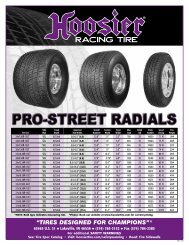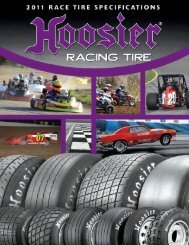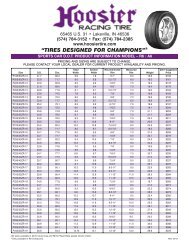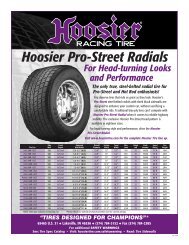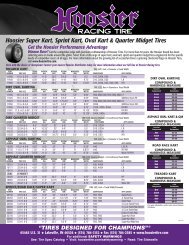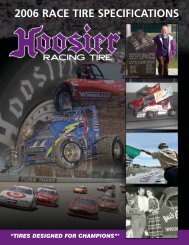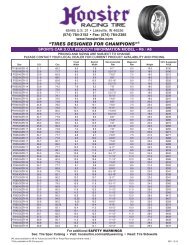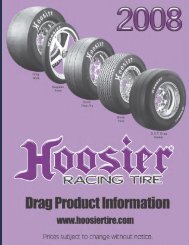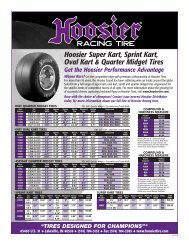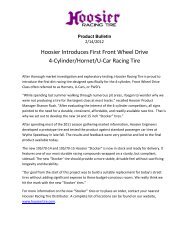in the united states district court for the - Hoosier Racing Tire
in the united states district court for the - Hoosier Racing Tire
in the united states district court for the - Hoosier Racing Tire
Create successful ePaper yourself
Turn your PDF publications into a flip-book with our unique Google optimized e-Paper software.
Case 2:07-cv-01294-TFM Document 263 Filed 09/15/2009 Page 24 of 34<br />
B. Antitrust Claims Brought Aga<strong>in</strong>st <strong>Hoosier</strong> and DMS<br />
STA alleges that <strong>Hoosier</strong> has conspired to restra<strong>in</strong> trade by enter<strong>in</strong>g <strong>in</strong>to exclusive<br />
contracts (Count II) and that its contracts constitute an illegal ty<strong>in</strong>g arrangement (Count VI).<br />
STA also alleges that <strong>Hoosier</strong> has attempted to monopolize (Count III), conspired to<br />
monopolize (Count IV), and “has willfully acquired, used and ma<strong>in</strong>ta<strong>in</strong>ed its monopoly power<br />
<strong>in</strong> <strong>the</strong> relevant market” by enter<strong>in</strong>g <strong>in</strong>to exclusive deal<strong>in</strong>g agreements (Count I).<br />
1. Relevant Market<br />
An antitrust pla<strong>in</strong>tiff has <strong>the</strong> burden of def<strong>in</strong><strong>in</strong>g <strong>the</strong> relevant market. Queen City<br />
Pizza, Inc. v. Dom<strong>in</strong>o’s Pizza, Inc., 124 F.3d 430 (3d Cir. 1997). The boundaries of a product<br />
market are determ<strong>in</strong>ed by <strong>the</strong> reasonable <strong>in</strong>terchangeability of use or <strong>the</strong> cross-elasticity of<br />
demand between <strong>the</strong> product itself and substitutes <strong>for</strong> it. See Queen City Pizza, 124 F.3d at<br />
436-38. In this case, <strong>the</strong> relevant market analyses required under section 1 and section 2 of <strong>the</strong><br />
Sherman Act are <strong>the</strong> same because STA’s claims under both sections relate to <strong>the</strong> <strong>Hoosier</strong> only<br />
s<strong>in</strong>gle tire rule.<br />
STA alleges a “market <strong>for</strong> <strong>the</strong> sale of rac<strong>in</strong>g tires that race on dirt oval tracks <strong>in</strong> <strong>the</strong><br />
United States and Canada” that <strong>in</strong>cludes “four categories of cars that are <strong>the</strong> most popular” and<br />
various “classes of cars <strong>in</strong> each category.” Third Amended Compla<strong>in</strong>t, at 6.<br />
STA also alleges “a separate and dist<strong>in</strong>ct market <strong>for</strong> <strong>the</strong> sale of rac<strong>in</strong>g tires <strong>in</strong><br />
‘sanctioned races’ with<strong>in</strong> <strong>the</strong> [larger] dirt oval track market.” Id. at 10. Both <strong>Hoosier</strong> and<br />
DMS object to such a narrowly-tailored separate market and argue that such a def<strong>in</strong>ition would<br />
not withstand economic analysis.<br />
24



